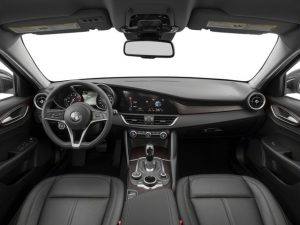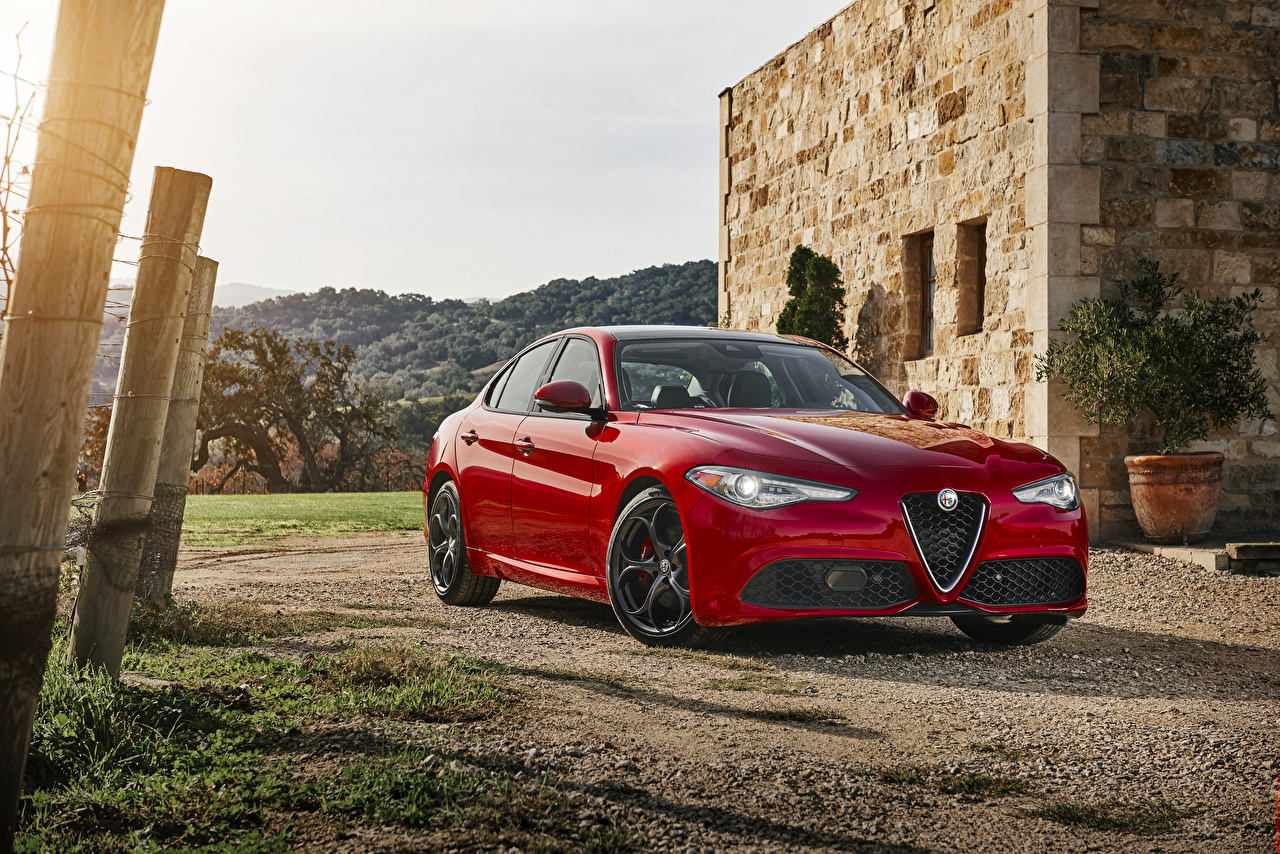By Shari Prymak
Alfa Romeo is only a tiny brand within the framework of the giant Fiat Chrysler Corporation, but it is a brand with a history like few others. For several decades, their cars were known for delivering a bit of the drama and feel of an exotic Italian sports car wrapped in a more practical and affordable package. They were loved for their character and soul as much as they were loathed for their tendency to break down and fall apart. It took a very particular type of person to love an Alfa. Usually a tolerant enthusiast who let emotion trump common sense.
After decades of absence and only hearing stories about these old Italian legends, Alfa Romeo has made a comeback to North America. One of the all-new models charged with securing its return is the Giulia. Given Alfa’s shaky history, that’s no easy task. In order to stand a chance against the well-established players from BMW, Mercedes, Audi, and Lexus, the Giulia needs to be something truly special.
Special or not, what’s clear is that the Giulia is a proper sports sedan. Even with a few lightweight trick pieces such as a carbon fibre driveshaft, the Giulia is really no lighter than its competitors. And yet, throw it into a corner, it magically feels like an agile little sports car. Precise, ultra-responsive steering and tightly controlled body motions help deliver class-leading handling capability. Surprisingly though, the ride quality remains smooth and civilized, even when the road is less than perfect. Ride and handling balance just doesn’t get much better than this. Rear-wheel drive comes standard, however, most will go for the optional Q4 all-wheel drive. Either way, you can’t go wrong.

Like many of its competitors, the Giulia is powered by a 2.0L turbocharged 4-cylinder engine matched to a ZF 8-speed automatic transmission. The transmission can be operated with a pair of massive, column-mounted paddle shifters that help make the most of the engine’s 280 horsepower and 306lb-ft of torque. Redline is a surprisingly low 5500 rpm, which makes it easy to bounce off the limiter when hustled in manual mode. It’s a quick car when prodded and the paddle shifters are fun to use, but it’s a little short on aural excitement. Fuel economy though is reasonable. I averaged 10.5L/100km in mixed city and highway driving.
Aside from the performance, another area that Alfa got mostly right is the styling. This is one of most nicely proportioned sedans on the market. The details too, such as rear end and taillights, are beautifully designed. Perhaps best of all, compared to all the ubiquitous German sedans on the road, the Giulia is a true standout. That distinctiveness, however, could merely be the result of being a fresh face that may very well fade over time. The Giulia is attractive, but like its competitors, it’s also somewhat conservative and safe-looking, especially in one of the more subdued colour options such as black or silver. I’d go with the stunning Rosso Competizione red metallic of my test car.
The interior is more or less convincingly upscale, but there are a few signs of cheapness here and there. The infotainment system isn’t the greatest either. I commend Alfa for designing its own unique interface, but it’s just not as sharp or user-friendly as the UConnect system you’d find in a cheaper Fiat. The control dial also lacks shortcut buttons for radio and navigation. The front seats are comfortable and supportive, and the steering wheel has a great look and feel to it. Taller riders might struggle with the narrow door openings and rear seat space, but overall, it’s acceptable.

The Giulia has a starting MSRP of $48,995, which isn’t bad considering it does come with a lot of standard equipment. Leasing is a popular option in this segment, however, and compared to BMW, Mercedes, and Lexus, Alfa Romeo needs to do a bit of work in offering competitive lease deals. At the time of writing, using the “Build Your Own” feature on the automaker websites, I was able to obtain monthly payments for near identically equipped 330i xDrive, C300 4Matic, IS300 AWD, and Giulia Ti AWD models on a 3-year term with a $5,000 down payment. The Alfa came out to $680 plus fees and taxes per month compared to $560 for the Mercedes, $520 for the BMW, and $450 for the Lexus.
The Giulia is undeniably a legitimate alternative to the German sport sedans. For a modern driver’s car, it’s about as emotionally satisfying as you can get in this segment. It’s also stylish, exclusive, and buying one means that you can tell people you own an Alfa Romeo. Is that really enough though to gamble on its unproven reliability given the brand’s unfortunate reputation, not to mention small dealer network and market presence? It’s a tough call, but I doubt it will be any more problem-prone than any other European brand. None of them are marvels of reliability and affordable servicing. If Alfa Romeo wants to compete in sales with historically reliable brands such as Lexus, however, quality will be expected.
Alfa Romeo is still in the early stages on the path to becoming a mainstream brand. With mainstream acceptance, however, comes great expectations. Hopefully Alfa finds its footing and sorts out any concerns, because this is a brand that deserves to succeed. The world doesn’t need another computerized appliance compromised by modern annoyances. What it needs are more cars that are special to get excited about. What it needs are more Alfa Romeos. They just need to make sense and work.

